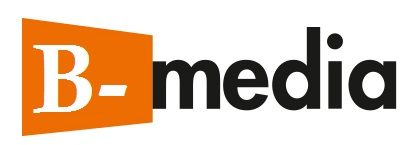Hey there, productivity champions! Whether it’s managing a team or working freelance, you understand how quickly time can slip away—similar to trying to catch confetti during a heavy storm. I recall struggling through remote jobs and wondering where the hours vanished. Time-tracking apps are like having a compass—efficient and precise when it comes to guiding you toward better clarity on billing and smoother project workflows. Join me as we unlock the best employee work time tracking tools of 2025, along with some personal stories that showcase how they saved my sanity. Ready to make each minute count? Let’s dive in!
Why Time Tracking Apps Are Must-Haves
With remote or hybrid work structures here to stay, keeping tabs on work hours is critical now more than ever. Over 80% of employees allocate time to low-value tasks, which dampens productivity across the board (this number has only steadily increased over the years). Since Zoom meetings dominated my calendar, I lost track of my business’s scheduled calls from clients demanding hourly breakdowns for invoiced amounts and backtracking month-long projects that spanned years—reclaiming focus became crucial. Tracking apps offer essential insights in real-time while assisting with precise invoicing for improved engagement accuracy, streamlining multiple departments simultaneously, all within sleek trackers displayed alongside work order lists, ensuring no pesky deadlines sneak up unannounced. Staying balanced beats any guesswork algorithm powering phones today!
Toggl Track: Powerful and Simple at the Same Time
Everyone seems to love Toggl Track. Its one-click timer and colorful reports make it easy to see how time is spent on different projects or clients. I remember using Toggl for a content creation job—its weekly feedback reports showed me how much time I was devoting to research, which helped streamline my work processes. Changing up my strategies improved my output quite a bit. With free plan subscriptions available for individuals and small team users, it comes with integrations such as Slack and Jira. For those looking for something simple yet very informative, Toggl is simply great.
Harvest: Invoices from Time
For explicit billing per hour worked, Harvest is a complementary dashboard dream come true. It can track elapsed time and instantly convert it into a polished invoice document. During group classes, I often needed to keep track of group time; clients appreciated clear timesheets enabled by Harvest, too. This was very useful during parts of trips with unreliable internet connections that required offline mode—data would sync later. With powerful integrations, including QuickBooks, the free plan offering single-user access plus two projects is a great starting point. Most freelancers or agencies seeking smooth invoicing processes will find this ideal.
RescueTime: Focus on What Matters
What makes RescueTime stand out is its automatic tracking feature that captures app and website usage without manual input. It is less about timers and more about understanding your habits. During the time I was writing a blog series, I tested out RescueTime, and it surprised me how much social media actually hindered my progress. Its focus alerts also helped me stay on track. The free version of RescueTime is great for basic tracking—ideal for individuals looking to increase productivity by reducing distractions.
Clockify: Budget-Friendly Team Tracking
Growing teams will benefit from Clockify’s free plan, which supports unlimited users and projects, as well as offering an impressive list of features. GPS tracking and automated timers are perfect for hybrid setups. When running virtual workshops, I would utilize coordinated time zone facilitator hour trackers with Clockify. With time logging through mobile apps and simplified payroll reporting, Clockify streamlines timesheet approvals, making it versatile for businesses large or small.
Controlio: A New Way to Increase Business Productivity
For businesses with remote or hybrid teams that need a little extra supervision, Controlio provides time tracking alongside productivity monitoring. I tried it out with a remote team, and the screenshot feature helped us stay accountable without being too obtrusive. Although it costs money, it works well with these tools for businesses that want deep insights along with real-time data.
Tips for Picking the Best Application
Identify your needs first—is it solo or team, billing or productivity-focused? Spend time testing free plans to find one that fits; I remember Toggl suited me better than Clockify after trying both. Ensure the application offers compatibility with already established ones like Google Calendar or Trello for seamless workflows. Set clear guidelines to ease adoption for the whole team; in my case, my team embraced tracking once I framed it as a productivity booster instead of spying. Weekly report reviews expose time-saving adjustments, too.
Final Note: Time Should Be Your Asset, Not Enemy
Time-tracking apps are like personal coaches wanting to help you and your teammates work smarter rather than harder. Whether it’s Toggl’s simplicity, Harvest’s invoicing feature, RescueTime’s focus, Clockify’s scalability, or Controlio’s oversight—whatever your vibe is, there is a tool that can match it. Experiment! You’re going to love owning your hours and unlocking new levels of efficiency come 2025.

